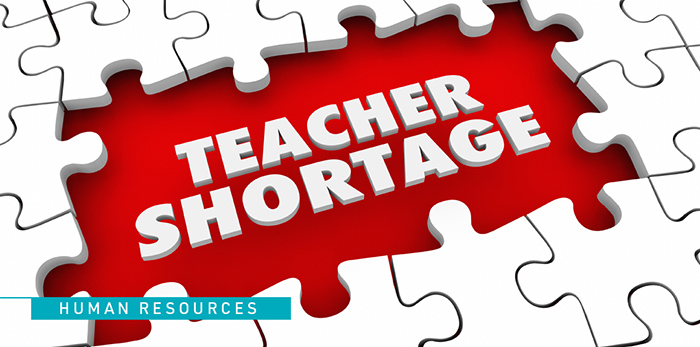Decade-old warnings of teacher shortages are now a reality.

Teachers in Australia have had enough. Teacher unions representing members in New South Wales government and non-government schools have taken joint strike action on 30 June. IEU NSW/ACT Secretary Mark Northam said: “Staff shortages and sinking salaries mean teachers and support staff are really struggling. Teachers are leaving the profession and graduates are not entering it.”
Associate Professor Philip Riley from the Australian Catholic University and Professor Robyn Ewing from the University of Sydney noted in 2017 that unsupported teachers leave the profession within the first five years. A lack of time for experienced teachers to mentor new teachers is one of the biggest problems.
There is ongoing pressure on teachers to improve test results, lift the profile of the profession, meet the teaching standards and deliver — faultlessly — an overcrowded curriculum. “Experienced teachers have had enough,” Professor Riley said.
One teacher interviewed said that teacher friends who graduated in 2007 had opted not to teach and only one had returned to teaching in 2017 after a decade in other careers.
In the lead up to the Federal Election, the Australian Labor Party campaigned with Labor’s Plan to Fix Teacher Shortages and Stop the Slide in School Results promising:
- An Albanese Labor Government will stop the slide in student results and make sure Australian schools have the world’s best teachers with a national drive to fix teacher shortages and attract our best and brightest to teaching.
- Australian schools have fallen behind under the Liberals – in the most recent international tests, Australia recorded our worst ever results in reading, maths and science.
- Our hardworking teachers do a terrific job, but we’re facing shortages of thousands of teachers by 2025. This will mean bigger class sizes, not enough experts teaching maths and science, and less one-on-one attention for kids.
- Labor will set a goal to double the number of high achievers choosing teaching, create new paths into teaching for experienced maths and science professionals, offer bursaries for talented students and attract more talented teachers to regional schools.
Now elected as the new federal government, these elements of Labor’s plan are being analysed by media, education bodies, unions and researchers.
However, much of the conversation focuses on the greatest emergency in education right now—the growing teacher shortage across Australia.
Jessica Holloway, Senior Research DECRA Fellow, Institute for Learning Sciences and Teacher Education, Australian Catholic University in The Conversation says: “Teachers are leaving the profession in record numbers, with no end in sight for when this might turn around. Monash University education researcher Amanda Heffernan and colleagues recently surveyed 2,444 Australian primary and secondary school teachers, and found a staggering 59% said they intended to leave the profession.”
How can the teacher shortage be fixed?
Pasi Sahlberg, Professor of Education, Southern Cross University says: “The teacher shortage in Australia has reached crisis levels. But this must be addressed by improving the working conditions for existing teachers, not by cash incentives to university students.
Teaching is no longer an attractive profession for many people. Survey after survey of teachers shows how the joy of working with children and for the community has been sucked out of schools. Many teachers feel increasingly stressed, disengaged, and undervalued in their work.
“If we don’t understand why teaching is not an attractive career, current strategies and promises funded by the governments will not be enough to solve the crisis.”
So how can the federal government address this shortage?
Sahlberg suggests three key changes:
- Improve conditions for teachers including more planning and collaboration time.
- Prepare teachers better for the job with experienced mentors on the job – just like the medical profession with new doctors
- Make teachers’ pay more competitive to reflect the demanding and stressful job.
It is vital for all parties involved in education to maintain open dialogue and work collaboratively for the sake of the profession and for the future of Australian school students.
If you have any questions or concerns, please contact our office on 8410 0122 or enquiries@ieusa.org.au
Sources and further reading
https://www.abc.net.au/news/2017-02-04/why-do-teachers-leave/8234054

